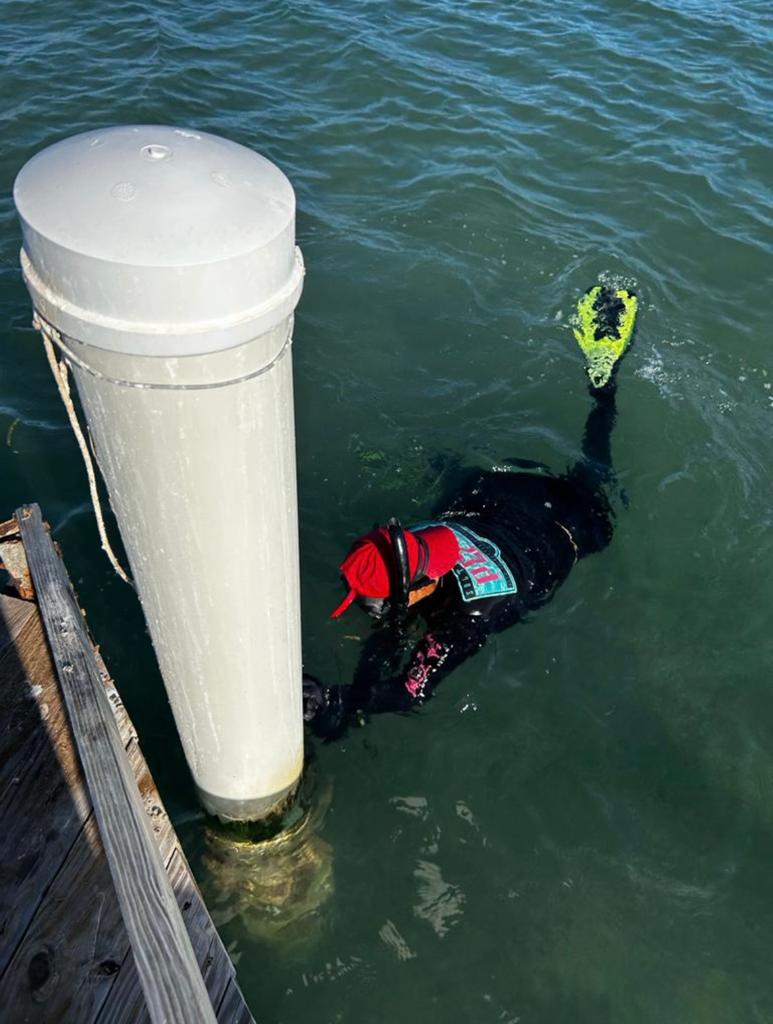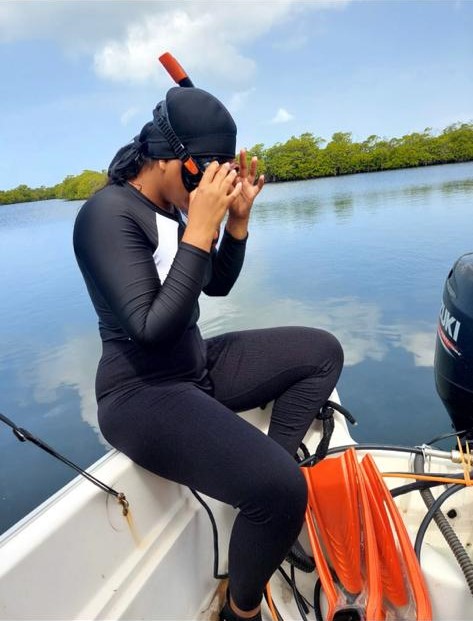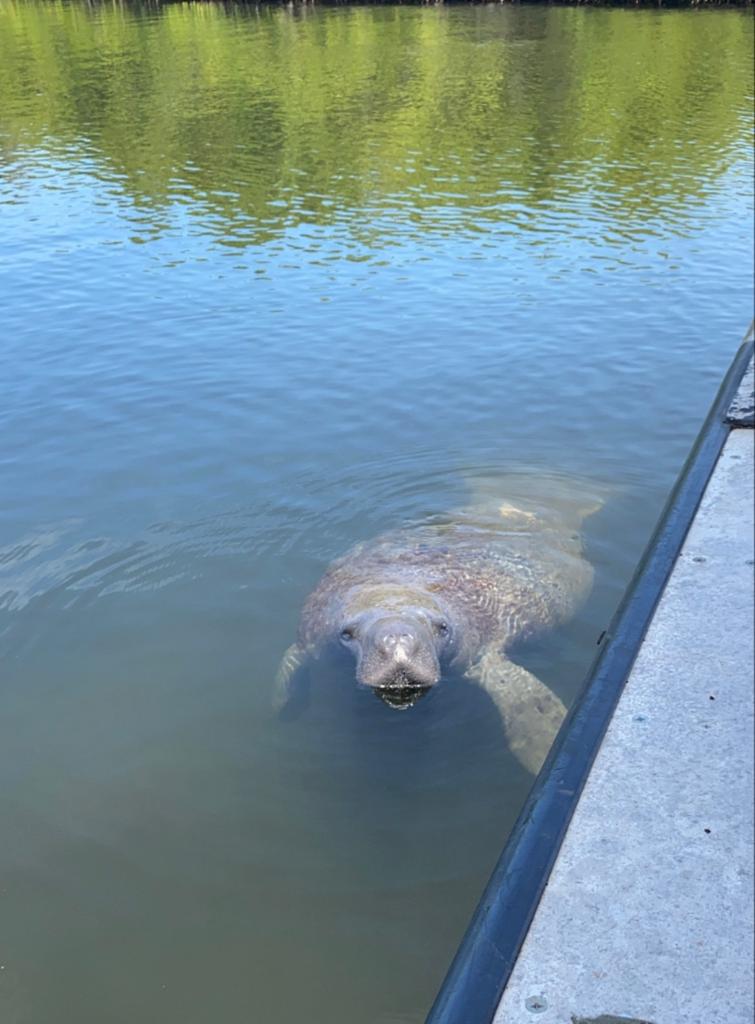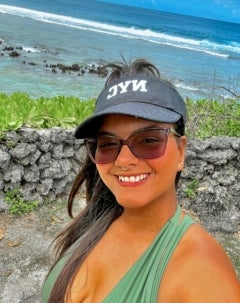Knauss legislative fellowships in Congress help build careers — and they're fun and educational. See our video and fact sheet for details.
Undergoing the Metamorphosis from Student to Professional Scientist (English)
Hello, readers! I am Mairim M. Villafañe-Vicente from Gurabo, Puerto Rico. I am part of the SEAS Islands Alliance, a Maryland Sea Grant-supported and National Science Foundation-funded geosciences student pathways program that focuses on the islands of Puerto Rico, Guam, and the US Virgin Islands. After completing a SEAS workforce fellowship in Puerto Rico in 2022, I am now working as a science communication intern for Maryland Sea Grant. I am based at the University of Maryland Center for Environmental Science’s (UMCES) Horn Point Laboratory, where I will soon take my next step: beginning my master’s degree with UMCES in spring 2024. I will pursue studies in zooplankton species in both Maryland and Puerto Rico. My dream is to use my skills to be part of the fight for Puerto Rico’s natural resources.
From a young age, I have been sensitive to animals and nature, and I was motivated by this empathic connection to dive into the biological sciences. Puerto Rico is a Caribbean island with many different ecosystems and a great diversity of animals and vegetation which needs committed people to protect it and to educate others. For this reason, after completing my undergraduate studies in 2022, I wanted to have new challenges. I wanted to go through a metamorphosis to transform myself from a student to a professional scientist. The SEAS Islands Alliance gave me the opportunity to develop my skills through a workforce fellowship at Jobos Bay National Estuarine Research Reserve (JBNERR) in Salinas, Puerto Rico. As assistant to Research and Monitoring Coordinator Angel Dieppa-Ayala, I developed knowledge about estuarine environments, how to study them, and their impact on larger ecosystems.

Before starting my workforce fellowship, I participated in a summer internship at JBNERR. As a fellow, I played a role of greater responsibility. My principal task was monitoring water quality for the System-Wide Monitoring Program (SWMP), one of the principal projects in the reserve. I used monitoring equipment called sondes in four study areas in Jobos Bay. This is a long-term monitoring project connected to 29 other National Estuarine Research Reserve sites around US territories. JBNERR is the only one in Puerto Rico.
Water quality monitoring gives us a hint about changes in a specific place, which can lead to variations in pH, salinity, and dissolved oxygen, among other factors. It is important to document these parameters before atmospheric events, such as hurricanes or storms, so we can observe storm impacts. I was also responsible for the meteorological station at JBNERR. I had to take daily measurements of temperature, cloud cover, and rain levels to then report them to the Cooperative Observer Program and National Weather Service.

My other projects included participating in the coastal bird census, mentoring students, assisting with school tours on the trails, helping to restore mangroves, and diving to assist doctoral students in their research about sea jellies, seagrasses, and other studies. My favorite part, aside from being in the water all day, was looking at kids’ faces as they learned about the processes of nature and seeing their enthusiasm when handling a red‐jointed fiddler crab.
As an interesting note, I was the first person to wear the JBNERR mascot costume! The Jobos Bay staff have a favorite animal resident named Tuque, a manatee rescued in 2005 in Ponce and released in 2010 at JBNERR. Tuque was hospitalized in 2020 after being hit by a jet ski, but he now lives freely in the area. To me, he represents resilience and is an example of a being that gets to thrive in its natural surroundings. Sadly, in Puerto Rico, many endemic species are endangered. Manatees are included in that list, as we only have 600-700 individuals. Making noise in the form of raising awareness can help to save these creatures. JBNERR uses the Tuque mascot to connect with visitors and schoolchildren, making their experience memorable and increasing the likelihood that they retain information about estuaries.

I am a dark-skinned Latina woman, a daughter, sister, aunt, and a mom of 15 outdoor cats and a dog. Outside of work, I enjoy hiking, beach vibes, drawing, and partying with my family. The key to my success to this date is the way I see things. Nothing that comes against you can destroy you if you don’t allow it. The responses are always inside you, so doing introspection helps a lot. I like to tell people to go out of your comfort zone, and never hesitate to take the first step to change things in your life. You may be afraid but do not become stagnant, because the only way things are going to work is if you make it happen. Stay humble, focus, believe in yourself, and be conscious of who is there to push you forward. In my case, this support is my family, friends, and pets. I also pushed myself to do my best to get here, and I will continue to do so! My current focus is to gain a broad understanding about science communication, and I hope to learn how to reach out to people with and without scientific backgrounds while working on my master’s degree research.
Top left photo: Exploring Guam's Pagat Cave Trail and swimming in a subterranean pool. Photo by Rafael Vega.
See all posts to the Fellowship Experiences blog

